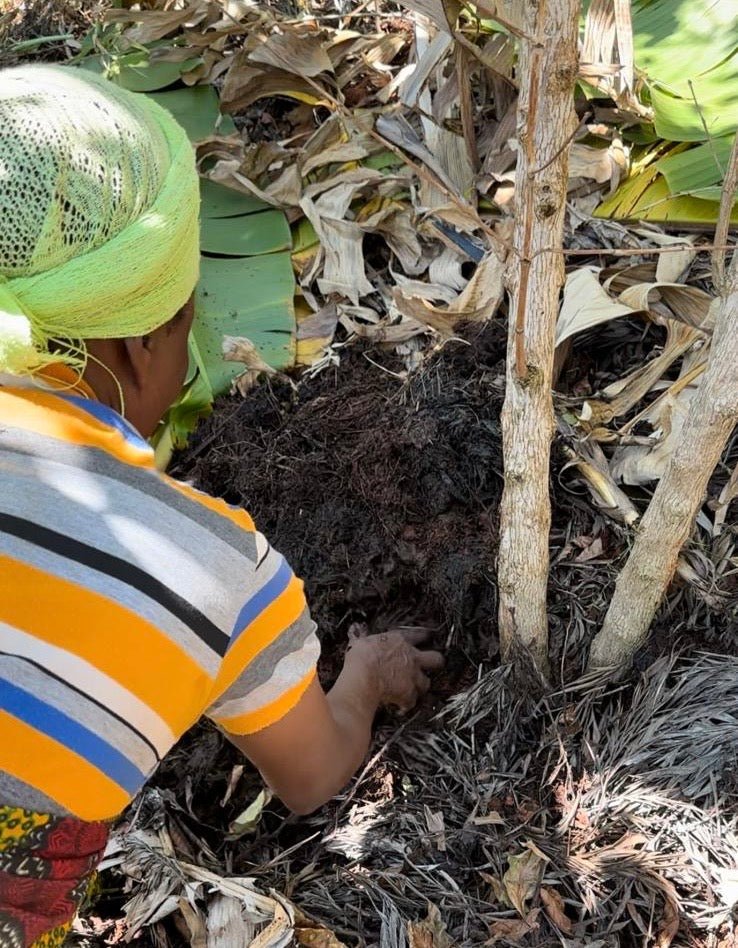
Read a journal entry written by our co-founder, Brendon, that highlights his experiences traveling to coffee farms in East Africa and seeing regenerative farming being put into practice:
Regenerative Agriculture in Coffee: On-the-Ground Observations
In recent years, regenerative agriculture has become a buzzword in the food and beverage world. Yet, while it may seem like a modern innovation, this movement actually harks back to how things were done before synthetic chemicals became the norm. Much like the resurgence of 1980s fashion, regenerative practices are a return to tried-and-true methods that prioritize the health of the land.
There are plenty of robust resources out there that dive into the science behind regenerative agriculture, including some excellent documentaries. However, instead of rehashing what’s already been covered, I’d like to share some observations from my own travels to coffee farms around the world—farms that are embracing these regenerative principles.
Lessons from the Land: A Journey to East Africa
Just a few weeks ago, I had the privilege of visiting East Africa, where I saw some of the best examples of regenerative farming in the specialty coffee world. Over the past 15 years, I’ve traveled extensively to coffee farms, but I’m still humbled by how much I learn with each visit. One thing that stands out is that many of the producers I meet don’t necessarily label their practices as “regenerative”—it’s just the way things have always been done or what they’ve discovered leads to better results.
One of the hallmarks of regenerative agriculture is plant diversity. On farms where only coffee is grown—what’s known as a monocrop—the soil often lacks the nutrients it needs, which can lead to lower-quality coffee beans. Farmers then have to rely on artificial supplements to make up for what’s missing. But when farms incorporate a variety of plants, such as beans, corn, and banana trees, the soil receives a natural boost. This diverse ecosystem helps the soil not just survive, but thrive.
While visiting with producers, they shared some of the additional benefits of this diversity. For example, banana trees provide shade, which is crucial for coffee plants, but they also offer bananas that can be eaten or sold. The banana leaves can be repurposed as natural fertilizer, further enriching the soil.
The Role of Animals in Regenerative Coffee Farming
Another critical aspect of regenerative farming is animal integration. While approaches vary, I encountered one farm that perfectly illustrated how this can be done effectively. Josephine, the farmer, allowed chickens to roam freely on her property, where they ate bugs that could otherwise harm the coffee berries. She also kept goats and sheep, whose manure served as a natural fertilizer, enriching the soil and contributing to healthier coffee plants.

In Burundi, I met another farmer, Radegonde, who saved up to buy a cow. This investment not only provided milk for her family and an additional income stream, but it also offered a steady supply of manure. When mixed with banana leaves, the manure became a potent fertilizer that nourished her coffee trees.
A Growing Movement
These are just a few examples of the holistic approach that defines regenerative farming. It’s a philosophy that goes beyond sustainability, aiming to leave the land in better condition than it was found. At Utopian Coffee, we believe this approach is essential for the future of coffee and for achieving true environmental sustainability.
That’s why we’re proud to have earned Regenerative Organic Certification® (ROC® ) as a roaster, and we’re committed to working with farms that share this vision. Although the number of Regenerative Organic Certified® farms are still relatively small, the movement is gaining momentum, and we’re excited to be part of it.
If you’re as passionate about the future of coffee as we are, we invite you to explore our newly released ROC® coffees. By supporting these regenerative practices, you’re not just enjoying a delicious cup of coffee—you’re also contributing to a healthier planet.

